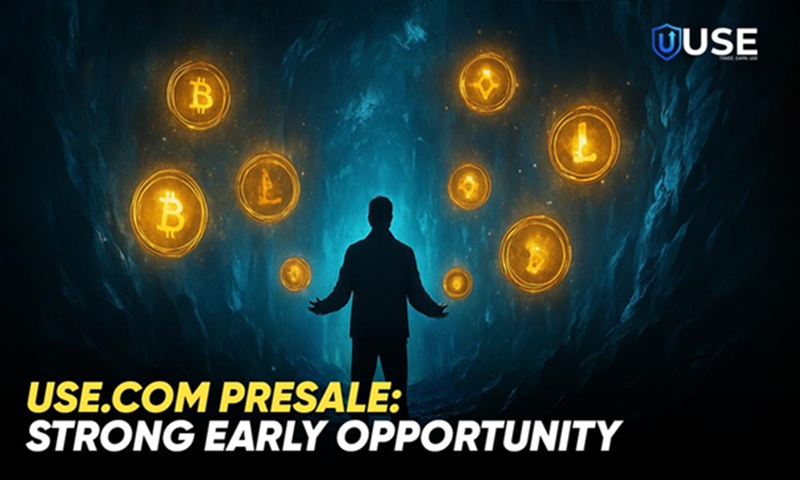USE.com is rapidly becoming one of the most talked-about new exchange projects of the year, and its presale has drawn significant attention from analysts and early-stage investors across global markets. As the cryptocurrency sector enters a new cycle defined by performance, compliance, and institutional-grade technology, USE.com is positioning itself as a next-generation trading platform capable of competing with top-tier exchanges from day one.
The presale announcement places the project at the front of a growing trend, where traders increasingly seek access to early exchange ecosystems built with strong fundamentals rather than speculative narratives. With a Beta release approaching and a complete trading infrastructure already developed, USE.com is being viewed as an opportunity with unusually high credibility for an early launch phase.
A New Exchange Designed for Modern Trading Standards
The interest surrounding the presale is grounded in the advanced engineering behind the platform. USE.com is built around a high-performance matching engine capable of low-latency trading, deep liquidity support, and rapid execution under heavy market conditions. This level of infrastructure is critical for spot and perpetual futures markets, especially during periods of volatility where execution speed directly affects profitability.
Security is equally central to the exchange. Institutional-grade custody practices, strong internal controls, and global compliance alignment give USE.com a stability profile that many emerging exchanges lack. For early contributors, these elements offer reassurance that the platform is being developed with long-term durability as a priority.
A Presale Backed by Real Utility and a Fully Developed Trading Ecosystem
One of the biggest differentiators for the USE.com presale is the presence of an operationally mature ecosystem at launch. Rather than introducing a presale before the product exists, the platform already includes spot trading, perpetual futures, earning tools, and launch infrastructure. This gives early supporters confidence that they are participating in a platform with real utility and an actionable roadmap.
The integration of these features positions USE.com as a complete exchange ecosystem rather than a single-product concept. This strengthens the presale’s relevance and increases interest among traders who want access to next-generation platforms with broad functionality.
Timeline Alignment Creates Strong Market Momentum
The timing of the presale ahead of the Beta phase is strategic. Traders who join early will be among the first to see the platform in action. This creates an immediate value cycle: early access allocation combined with real-time validation of the exchange’s interface, execution engine, and liquidity design.
Market analysts note that this type of synchronized rollout often accelerates user growth, as early contributors gain practical insights into platform performance and can evaluate its long-term potential firsthand.
Why Traders Are Paying Close Attention
Across global trading communities, there is growing frustration with aging exchange infrastructures, inconsistent liquidity, high fees, and unclear regulatory direction. As a result, traders are increasingly exploring modern exchanges that offer stronger foundations and better long-term alignment with market evolution.
USE.com enters this environment with a clear advantage: next-generation engineering, transparent design, global readiness, and a presale that opens the door to early participation in the platform’s development.
This combination has led many traders to label the USE.com presale as one of the standout early opportunities of the upcoming market cycle.
Analyst Perspective
From an analytical standpoint, USE.com demonstrates several hallmarks of projects that scale rapidly once launched. It has a high-performance core architecture, a compliance-focused operational framework, a complete trading suite, and a clearly defined roadmap aligned with market expectations. With momentum building, the presale may become one of the defining early events of this cycle—especially if the Beta phase validates the platform’s technical strengths.
Telegram: https://t.me/useglobal






